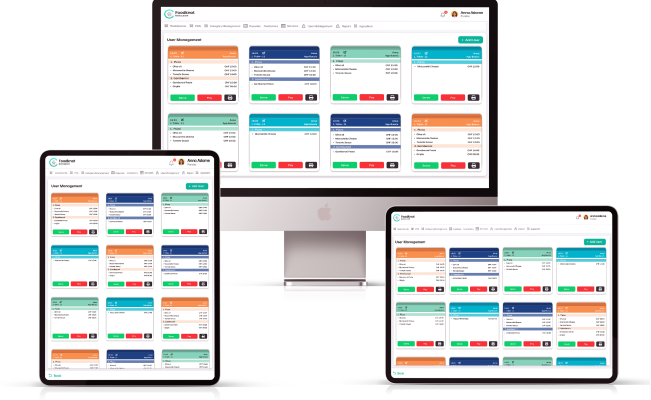Whether you’ve decided to launch an eCommerce business or you’ve decided to pivot from a brick-and-mortar store to an online environment due to COVID-19, starting an eCommerce business can be a successful endeavour. In the last months of 2024 28.1 million Canadians made purchases online. That is a large number of people who visit websites and, if they like what they see, make a purchase. But it takes more than buying a domain name and adding products or services to your website. In addition to material considerations, there are technological considerations to make. An ecommerce website development company business has provided you with five steps to get you started:
1) Could you figure out what you want to sell?
This may be a piece of cake if you already have a store. However, if you’re starting with eCommerce and want to focus on products, you must consider what you’ll sell and where you’ll obtain it. The first step in determining what to offer and how to sell it is to ensure it is relevant to today’s consumer. Consumers have become much more aware of their spending habits due to COVID-19. First and foremost, be sure there is a consumer eager to pay for the thing you want to sell.
2) Buy A Domain Name.
This step may be straightforward if you already have a business name. However, unless you spend a lot of money, you won’t be able to get a short and sweet dot com name. You also don’t want a domain name that’s five words long or difficult to remember for your customers (or spell). Ideally, as we did, you should use your firm name with a dot com—or a dot ca if you’re in Canada. There are several other TLDs (Top Level Domains) to consider, such as.net,co, and.org, but if possible, go with the revered.com as your principal domain.
3) Build An Ecommerce Store.
There are several factors to consider when launching an eCommerce store, from adding branding into your layout to loading products/services, including:
- Your shopping cart software. Various coding languages, including ASP, PHP, JavaScript, and HTML, can be used to create shopping carts. To avoid monthly expenses, embed in your WordPress website (such as WooCommerce). Choosing the finest shopping cart software necessitates a thorough examination of the advantages and disadvantages of each option. The decision is often based on your requirements, budget, and desired functionality.
- The visuals (copy and images). How your store looks and feels to customers dramatically impacts whether or not they will trust you to make a purchase. Furthermore, the way you describe each of your products and use professional-looking images can make or break a transaction if done incorrectly.
4) Focus On SEO.
Did you know that ecommerce SEO Services offer the best return on investment for any internet marketing strategy? Despite this, many small business owners construct their websites with little regard for how search engines view their content. Search engine optimization (SEO) is researching keywords to determine which terms your target audience uses to find what they’re looking for. On-page strategies like keyword-rich content and meta tags will be a big part of your SEO campaign.
5) Create Valuable Content.
Customers don’t want to be bombarded with pages and pages of merchandise or a one-liner pitching those services. They want you to be a go-to expert who can provide everything from helpful hints to assurances that their credit card information is secure. The process of content marketing is never-ending. If you want to please both your target audience and the search engines, you must upload helpful articles, blogs, and videos regularly.
6) Follow SEO Best Practices
Once your eCommerce store is launched, that means it is live to the public to find. However, if they’re unable to find it through organic search, that means you need to implement SEO best practices to increase visibility. A few ways to do this are through writing detailed product descriptions on product detail pages, performing keyword research and adding structured data and keyword rich titles and meta descriptions.
7) Invest in Reliable Shipping Software
If your website sells products online (as opposed to having an eCommerce website to promote your brand’s services), then it is critical to invest in software that ensures your website’s shipping process runs smoothly. There are a multitude of tasks that must be completed in the back end to ensure customers have a great experience with your brand from beginning to end 一 including importing and printing shipping labels, managing inventory and orders from ERPs and marketplaces and sending tracking information out through APIs.
8) Invest in a Site Search Tool
Using an eCommerce site search tool can be really advantageous. A site search bar makes it easy for online shoppers to search for exactly what they’re looking for on your website, and it returns instantaneous search results. We recommend investing in a tool that lets you fine tune merchandising rules and offer personalized product recommendations based on each shopper’s behavior.
Our team is a huge supporter of Searchspring since it helps merchants streamline their merchandising, offer product recommendations, narrow down searches with filtering and sorting options and report on shopping behavior, performance and more.
9) Invest in Fraud Protection Software
Protecting your eCommerce store and your customers from fraud is an essential component of building customer trust. According to Signifyd, more revenue is lost to the fear of fraud than it is to fraud itself. In fact, Card Not Present fraud pressure across industries sits at about 1% while limited data and the liability of fraudulent chargebacks cause eCommerce merchants to turn down about 10% of orders. This is a huge chunk of potential revenue that is lost! With Signifyd’s fraud protection, merchants can automate fulfillment for legitimate customers while at the same time block fraudulent orders. Plus, when you augment order automation with a financial guarantee against fraudulent chargebacks on approved orders, you pay zero dollars in fraud losses.
10)Prepare Product Pictures & Videos
As you know, a good picture speaks a thousand words. When users land on your website store, their attention first goes to the images you have used, and if they like what they see – they will browse more on your website. Good quality product pictures on your e-commerce website will help you to convert more visitors into buyers. So when you build an eCommerce website, use clear and reasonable quality images.
According to recent research, about 71% of users think the video explains the product better. Product explainer videos on your online store will make it easy for the user to understand everything about your products and help them to make buying decisions from your online store. You cannot deny the fact that users these days like videos more than reading long texts.


























